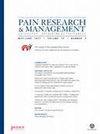纳布啡与右美托咪定在鼻内镜手术中的预防性镇痛效果
IF 2.5
3区 医学
Q2 CLINICAL NEUROLOGY
引用次数: 2
摘要
本研究旨在评价纳布啡联合右美托咪定用于内镜鼻窦手术预防性镇痛的有效性和安全性。方法将110例鼻中隔偏曲患者随机分为纳布啡组(N组)、右美托咪定联合纳布啡组(DN组)和生理盐水组(C组)。N组在麻醉诱导前15 min静脉注射纳布啡0.2 mg/kg;DN组患者静脉滴注右美托咪定0.5 μg/kg,注射纳布啡0.2 mg/kg;C组给予0.9%生理盐水。记录两组患者平均动脉压(MAP)、心率(HR)、数值评定量表(NRS)评分、恢复质量-40 (QoR-40)评分、补救性镇痛需求、瑞芬太尼和异丙酚用量、不良反应发生率。结果DN组MAP、HR、NRS评分显著低于N、C组,QoR-40评分显著高于N、C组(P < 0.001)。治疗性镇痛的需要、瑞芬太尼和异丙酚的使用以及DN组恶心的发生率在三组中最低(P < 0.001)。结论纳布啡和右美托咪定在内镜鼻窦手术中预防性镇痛不仅能保持血流动力学稳定,而且在不影响苏醒和拔管时间的情况下,可减少术中麻醉用量,减少术后疼痛,提高术后恢复质量。本文章由计算机程序翻译,如有差异,请以英文原文为准。
Effect of Preventive Analgesia with Nalbuphine and Dexmedetomidine in Endoscopic Sinus Surgery
Background The study was to assess the efficacy and safety of nalbuphine combined with dexmedetomidine for preventive analgesia in endoscopic sinus surgery. Methods 110 patients with deviation of the nasal septum were randomized into the nalbuphine group (group N), dexmedetomidine combined with nalbuphine group (group DN), and saline group (group C). Fifteen minutes before the induction of anesthesia, patients in group N were injected nalbuphine 0.2 mg/kg intravenously; patients in group DN received intravenous infusion of dexmedetomidine 0.5 μg/kg and injection of nalbuphine 0.2 mg/kg; patients in group C received 0.9% saline. Mean arterial pressure (MAP), heart rate (HR), numerical rating scale (NRS) scores, quality of recovery-40 (QoR-40) scores, the need for remedial analgesia, the consumption of remifentanil and propofol, and the incidence of adverse reactions were recorded. Results MAP, HR, and NRS scores of the DN group were significantly lower and the QoR-40 scores were higher than those of groups N and C (P < 0.001). The need for remedial analgesia, the consumption of remifentanil and propofol, and the incidence of nausea in the DN group were the lowest among the three groups (P < 0.001). Conclusion Preventive analgesia with nalbuphine and dexmedetomidine in endoscopic sinus surgery can not only maintain hemodynamic stability but also reduce intraoperative anesthetic dosage, postoperative pain, and improve the quality of postoperative recovery without affecting the revival and extubation time.
求助全文
通过发布文献求助,成功后即可免费获取论文全文。
去求助
来源期刊

Pain Research & Management
CLINICAL NEUROLOGY-
CiteScore
5.30
自引率
0.00%
发文量
109
审稿时长
>12 weeks
期刊介绍:
Pain Research and Management is a peer-reviewed, Open Access journal that publishes original research articles, review articles, and clinical studies in all areas of pain management.
The most recent Impact Factor for Pain Research and Management is 1.685 according to the 2015 Journal Citation Reports released by Thomson Reuters in 2016.
 求助内容:
求助内容: 应助结果提醒方式:
应助结果提醒方式:


